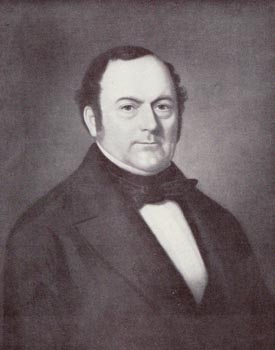Swedish Snus History

In the 16th century, Swedes began to mix tobacco leaves with salt and water to place behind the upper lip. The snuff was born, but prior that the predecessor went from the Caribbean, into the French court and then across Europe as the latest fashion. Here is the history about snuff, from the 1400s until today.
1400-1500: The early history of snus
Europeans came into contact with tobacco for the first time on the island of Hispaniola (Haiti) in the West Indies. It was in October 1492 when Columbus and his men went ashore on the island. On the beach, they were met by indigenous people bearing gifts. The gifts included some dried leaves, which the natives regarded as very valuable.
In 1497, the monk, Ramon Pane, came into contact with the predecessor of snus when he accompanied Columbus on the second journey to America. He saw native priests inhale a powder into their noses through a fork-like tube. According to researchers, the powder probably did not consist exclusively of tobacco, and snus itself only became significant to tobacco consumption when it was introduced in Europe.
Spanish and Portuguese seamen transported the tobacco plant to Europe. In the mid-1500s, physicians in Lisbon started using the herb for medicinal purposes. They thought that it could cure syphilis and cancer, among other illnesses. The tobacco was cultivated in their backyards.
Jean Nicot
Jean Nicot, French ambassador in Lisbon and whose name was used by Linné for the Latin name given to the tobacco plant, Nicotiana tabacum, is highly significant to the development of snus consumption.
In the 1560s, Nicot came into contact with the tobacco plant, which was then grown in the backyards of Lisbon, and became so enthusiastic that he took some tobacco plants home to Paris. On discovering that Queen Catherine de Medici of France was suffering from chronic headaches, it is said that Nicot advised her to crush the tobacco leaves and inhale the powder through her nose. The Queen followed the instructions and the headaches disappeared. The miracle cure rapidly made snus popular in French court circles.
1600-1700: Snus arrives in Sweden
Since Paris was the model for all European courts, it was not long before snus was being used in the rest of Europe. The first time snus was named in Sweden was in 1637. A customs document states that snus was brought to Sweden from Porvoo in Finland.
In the 1700s, the use of snus became a must among the men and women of the aristocracy. A snus can was one of the possessions of a fine gentleman in the 1700s. It had to be expensive and handled with carefully controlled elegance. The cans were small masterpieces of gold, silver or other precious material and rapidly became a most popular gift.
In the 1700s, the Swedish tobacco industry had its breakthrough. Tobacco was planted in Skåne, Gränna and Alingsås, where the father of the potato, Jonas Alströmer, started growing tobacco on a large scale. At the end of the 1700s, tobacco was being grown in about 70 Swedish towns.
The fall of snus
The French Revolution signified the end of the upper class that traditionally used snus. Although snus experienced a temporary upswing under Napoleon, a major snus user, it became unfashionable after his fall, maybe even politically risky to continue using snus. Snus went out of fashion and the burghers, who now came into power, switched to smoking cigars.
1800: New snus habits
In Sweden, political developments coincided with a change in snus habits. In the early 1800s, maybe somewhat earlier, Swedish consumers switched to placing a pinch of snus under the lip. Many farmers, who had their own tobacco plantations, made their own snus. They ground the tobacco in their coffee grinders or in snus mills that they had carved themselves.
1800-1900: Snus manufacturers
During the 1800s, manufacturers began to produce local varieties of the moist snus. Some popular suppliers include Petter Swartz with Röda Lacket and J.A. Boman with General snus. However, the largest brand was Ettan, Ljunglöfs Ettan.
Jacob Fredrik Ljunglöf’s plant at Badstugatan, today Sveavägen in Stockholm, traces its roots to a tobacco company founded around 1695. Jacob Fredrik Ljunglöf took over the company in 1822 and turned it into the leading snus plant in Europe and the world.
Practically all Swedish snus manufacturers in the 1800s included a snus No. 1, No. 2 and No. 3 in their assortments, which represented various qualities. However, Ljunglöf’s launch of his No. 1 as a national quality product was a major success. Ljunglöf’s Ettan became a household name. Today, it is still one of Sweden’s largest brands and accounts for approximately one fifth of all snus sales in Sweden.
America
When slightly more than one million Swedes emigrated across the Atlantic from 1846 until 1930, they carried their Swedish traditions with them, including the tradition of using snus. Using snus was so common that the main streets of the Swedish/American districts were called snus boulevards by Americans. Snus became an identity mark for Swedes.
Monopoly introduced
In the early 1900s, the Swedish government needed funds for the military and the first pension reform. The funds were to come from tobacco. After a 250-year break, the tobacco monopoly was re-introduced in 1915. It was exercised by AB Svenska Tobaksmonopolet.
Snus consumption increased rapidly and reached record levels in 1919, when 7,000 tons were sold. Sweden then had a population of 6 million people, which meant a consumption of 1.2 kg per capita.
During the following years, snus suffered a setback to the benefit of other tobacco products, primarily the more popular cigarettes, which became part of the American trend after World War II.
1970 to today: A success story
Snus began to regain its popularity in the late 1960s when health risks associated with cigarette smoking were documented in several reports. During the 1970s, the first portion-packed snus was introduced, an important step for snus to reach a broader public. Since then, the sales curve has pointed upwards.
Source:
Swedish Match- https://www.swedishmatch.com/Our-business/smokefree/History-of-snuff/
Wikipedia- https://sv.wikipedia.org/wiki/Jacob_Fredrik_Ljungl%C3%B6f
